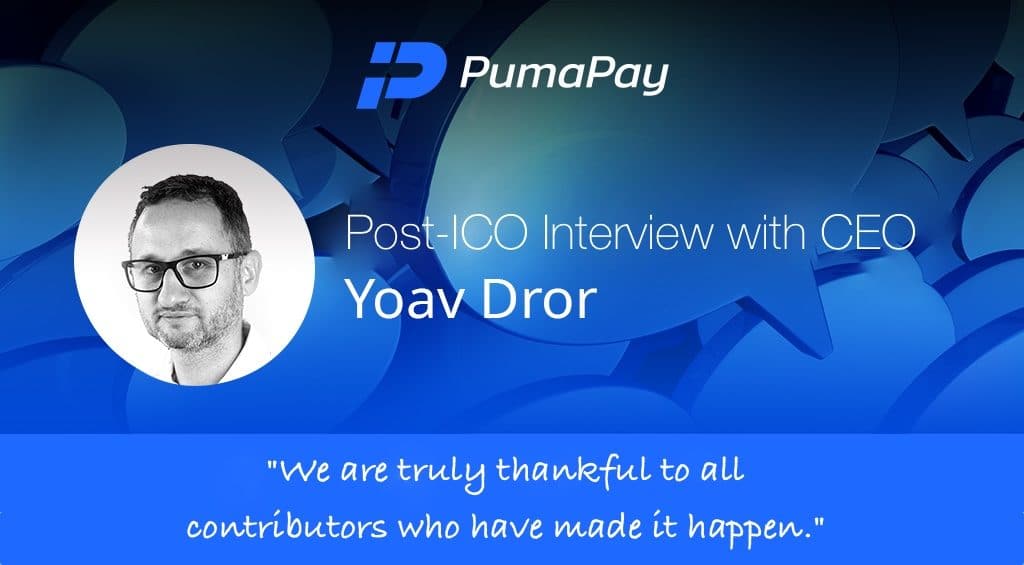PumaPay, the next-gen blockchain-based payment protocol, has recently completed its token sale which raised an extremely impressive $117 million dollars ($117,019,041 to be exact), making it one of the biggest and most successful token sales to be completed in the history of ICOs.
We’ve sat down with Yoav Dror, the CEO of Pumapay, to talk about how the token sale went as well as gathering his thoughts on PumaPay’s future developments.
Hi, Yoav. Congratulations on your token launch!
Can you let us know how you felt after the token sale? Did it meet your expectations?
Thank you! It’s been quite a ride, and yes, raising $117 Million has definitely met our expectations. Now we are able to develop the PullPayment Protocol at the full scale which has been the ultimate goal. We are truly thankful to all contributors who have made it happen.
Unlike other ICOs, PumaPay did not open the token sale to the public but instead only limiting it to a private sale.
What was the thought process behind this decision and now that the token sale is over, do you feel that this decision is justified in terms of the token sale outcome?
We had put a lot of thought into that decision, and it wasn’t the easiest one to make. After all, a lot of our community members, people who supported the project from the very beginning, were waiting for the public sale.
But ultimately, we had to consider the prevailing regulatory conditions and think about the future of the project. Therefore, we made the decision to call off the crowdsale to make sure we avoid any potential consequences that may distract us from developing the PullPayment Protocol in the future.
What were some of the most valuable lessons you’ve learned while running the token sale? Can you share your thoughts with us?
Personally, my main takeaway has been that great things can be built with a team of passionate and dedicated professionals, even in the shortest timelines. We still have a lot of work ahead, but with the expertise and support we’ve gained along the way, all goals are within our reach.
During the token sale, what were some problems (if any) that you encountered which affected the process?
How did you overcome them?
Thankfully, we did not have any serious problems. The team has done a great job and the process went very smoothly. The decision to call off the Crowdsale was probably the hardest part.
What was the reason behind re-launching the bounty program for PumaPay?
Was it based purely on community feedback or did you feel that the team could benefit a lot from the program?
The feedback from the community was the main factor that made us look into extending the Bounty program. We were happy to follow this request as the Bounty program had proven to be a great means of connecting with the crypto community, where the public was learning about the project by the word of mouth. The crypto community online is active, curious and passionate – exactly the kind of supporters and feedback an ambitious project like PumaPay needs.
The period after the token sale is usually when companies are scrutinized the most by investors and other users.
How do you plan to deal with the pressure and expectations of investors after the token sale?
This is a natural process – investors want to see where their money went, what the project team does and so on. We have announced the roadmap for the project and intend to meet every deadline we have committed to. We also remain in close contact with our contributors and are happy to answer any questions they might have.
Editors Pick: PumaPay successful token sale
PumaPay Raises $117 Million For Its Token Sale & Updates On The PumaPay Protocol’s Features & Partners
PumaPay, the next-gen blockchain-based payment protocol, has recently completed its token sale which raised an extremely impressive $117 million dollars ($117,019,041 to be exact), making it one of the biggest and most successful token sales to be completed in the history of ICOs. The private token sale, which was open

